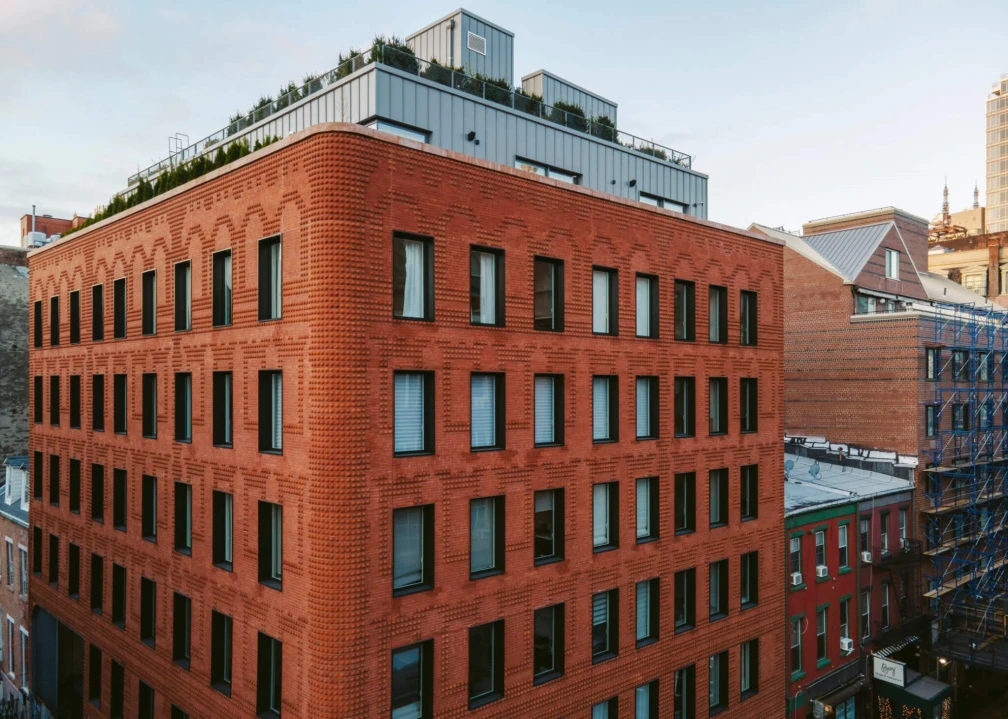In 1932, 98 percent of the heads of households in the area of New York City now variously known as Little Italy, Soho, or the Lower East Side were Italian emigrants, The New York Times reported. This wave of immigrants, who largely arrived in the U.S. from the 1880s through the 1920s, were preceded by the Italianate, a mid-19th-century tripartite style of ornamentation and brickwork that changes as the building rises.
Almost a century later, the area’s demographics have changed. But for the facade of the Grand Mulberry, a seven-story, 20-unit building at 185 Grand Street completed last year at the corner of the area’s famed Mulberry Street, Morris Adjmi Architects (MA) looked back to the Italianate for its local resonance.



